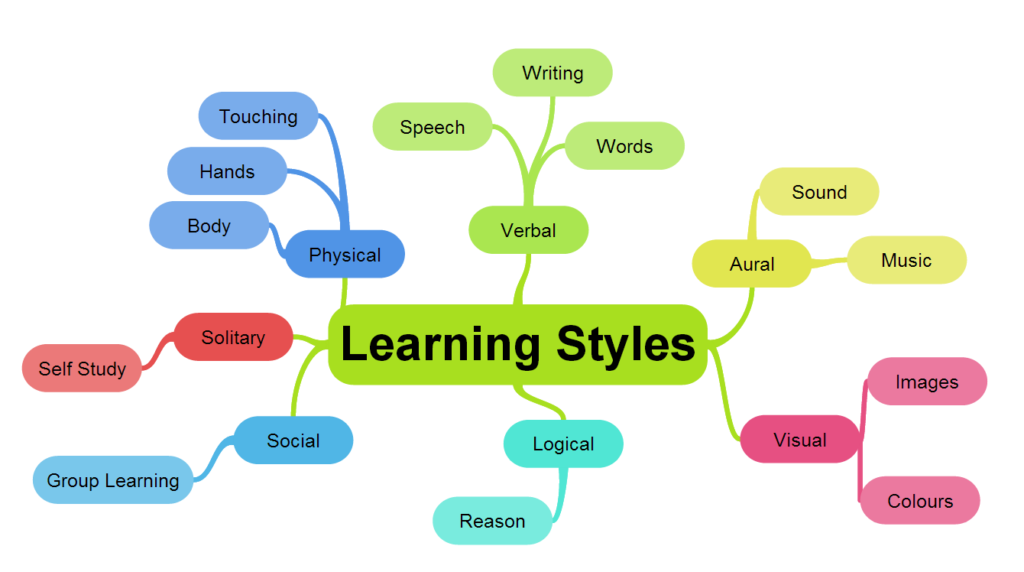
In the journey of personal and professional development, understanding how we learn is key to unlocking our full potential. Lately, I have been obsessed with learning in an attempt to upgrade myself to match the version of myself I want to be. Here’s what I’ve learnt: Just as we have unique personalities, we also have distinct learning styles that influence how we absorb, process, and retain information. So let’s explore the different types of learners, why it’s essential to embrace your learning style, and practical strategies to optimize your learning approach for career growth and success.
Overview of Learning Styles:

Visual Learners: Visual learners prefer to process information through images, diagrams, and spatial representations. They excel in environments where visual aids and illustrations are used to convey concepts.
Auditory Learners: Auditory learners thrive on listening and verbal instruction. They comprehend information best through lectures, discussions, and audio-based materials.
Kinesthetic Learners: Kinesthetic learners learn by doing. They prefer hands-on experiences, physical activities, and interactive learning environments.
Reading/Writing Learners: Reading/writing learners absorb information best through written text. They excel in reading books, taking notes, and writing summaries or essays.
Logical/Mathematical Learners: Logical/mathematical learners are analytical thinkers who excel in problem-solving, reasoning, and critical thinking tasks. They prefer structured, systematic approaches to learning.
Social/Interpersonal Learners: Social/interpersonal learners thrive in group settings and collaborative environments. They enjoy discussing ideas, sharing experiences, and working with others.
Solitary/Intrapersonal Learners: Solitary/intrapersonal learners prefer to learn independently. They excel in self-directed study, reflection, and introspection.
Challenges of Traditional Learning Methods

Traditional one-size-fits-all learning methods often overlook the diverse needs and preferences of learners. Lecture-based instruction, standardized testing, and rigid curricula may not cater to the individualized learning styles of students, leading to disengagement and suboptimal learning outcomes.
Discovering Your Learning Style
Now that we understand the different ways in which people learn, lets explore how we can identify our individual learning styles.
To identify your dominant learning style, consider your preferences and tendencies in various learning scenarios. Ask yourself:
How do I prefer to receive and process information?
What activities or methods help me learn most effectively?
In what environments do I feel most engaged and motivated to learn?
The Importance of Embracing Your Learning Style
– Improved learning outcomes and comprehension.
– Increased engagement and retention of information.
– Enhanced confidence and self-awareness.
– More efficient use of study time and resources.
Adapting Your Learning Approach
To optimize your learning approach based on your learning style:
Tailor your study methods to align with your preferences (e.g., using visual aids for visual learners, incorporating hands-on activities for kinesthetic learners).
Experiment with different learning techniques to find what works best for you.
Seek out resources and materials that cater to your learning style, such as online courses, textbooks, or interactive tools.
Communicate your learning needs to educators or trainers to ensure that learning environments accommodate diverse learning styles.
Tips for Effective Learning
Visual Learners:
Use mind maps, infographics, and diagrams to visualize concepts.
Watch educational videos or tutorials to reinforce learning.
Create flashcards or visual mnemonics to aid memory retention.
Auditory Learners:
Listen to podcasts, audiobooks, or recorded lectures.
Participate in group discussions or study groups.
Record and listen to your own voice explaining concepts.
Kinesthetic Learners:
Engage in hands-on activities or experiments.
Role-play scenarios to simulate real-world situations.
Take frequent breaks to move around and stay physically active.
Reading/Writing Learners:
Read textbooks, articles, or academic papers on the subject.
Take detailed notes and write summaries or essays to reinforce learning.
Create concept maps or outlines to organize information.
Logical/Mathematical Learners:
Solve practice problems or puzzles to sharpen analytical skills.
Break down complex concepts into logical sequences or steps.
Explore real-world applications of theoretical concepts.
Social/Interpersonal Learners:
Participate in group projects or collaborative assignments.
Join study groups or discussion forums to exchange ideas.
Teach concepts to others to reinforce understanding.
Solitary/Intrapersonal Learners:
Set aside dedicated time for self-study and reflection.
Create a quiet, organized study space free from distractions.
Set personal goals and monitor your progress independently.
Understanding your learning style is the first step toward maximizing your learning potential and achieving success in your personal and professional endeavors. By embracing your unique way of learning and adopting tailored strategies that align with your preferences, you can unlock new levels of efficiency, engagement, and mastery in your educational journey. Remember, there is no one-size-fits-all approach to learning, so embrace your individuality and embark on a lifelong journey of discovery and growth.
 Discover Your Learning Style: A Guide to Unlocking Your Full Potential
Discover Your Learning Style: A Guide to Unlocking Your Full Potential